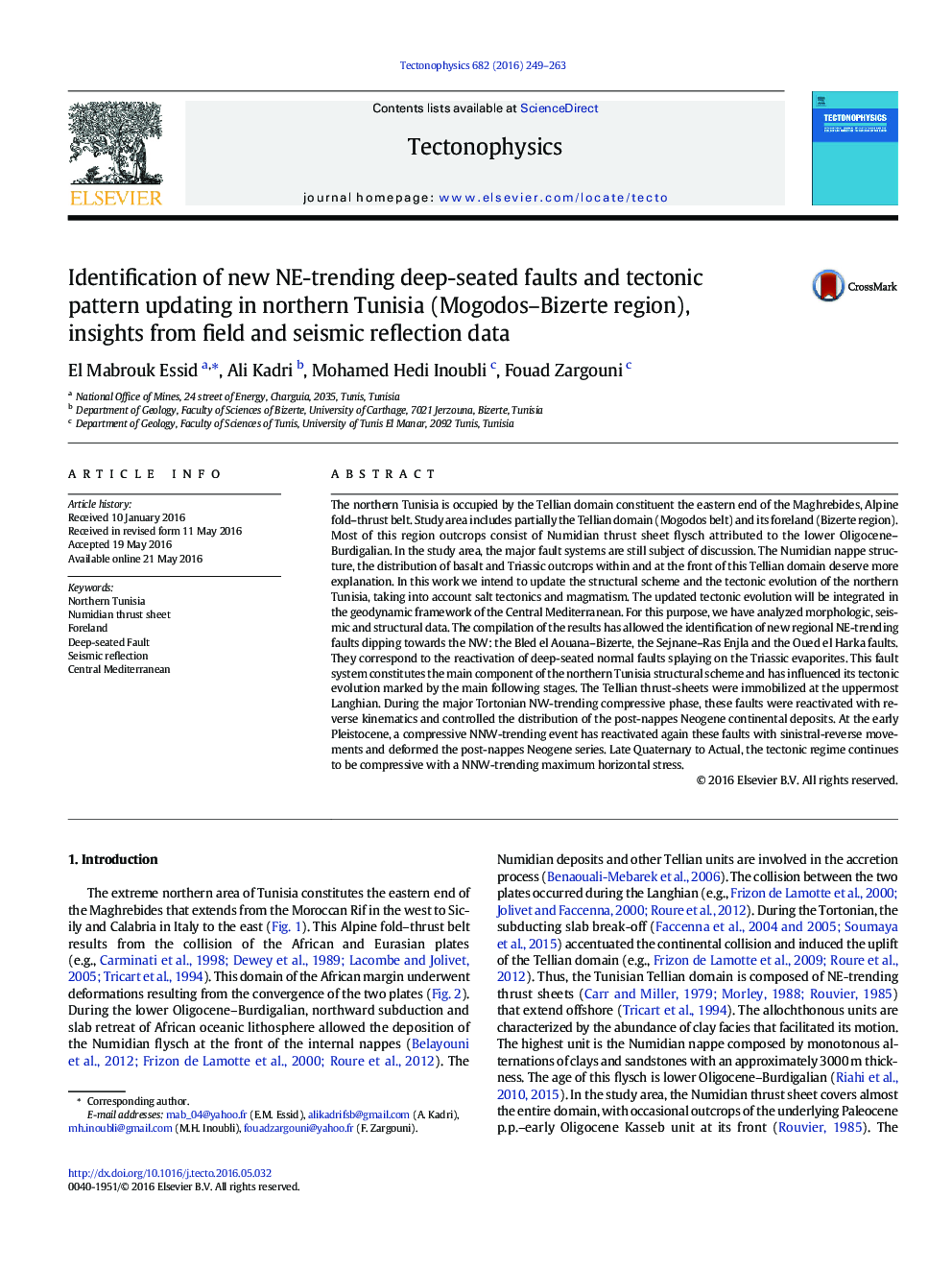| کد مقاله | کد نشریه | سال انتشار | مقاله انگلیسی | نسخه تمام متن |
|---|---|---|---|---|
| 4691316 | 1636716 | 2016 | 15 صفحه PDF | دانلود رایگان |

• In northern Tunisia, analysis of field and seismic data allowed the identification of NE-trending deep-seated faults.
• These faults explain the distribution of some Triassic and basaltic outcrops.
• They have controlled the distribution of post-nappes Neogene deposits.
• These faults shaped the current morphology of the Tellian domain and its foreland.
• This fault system also affects the Algerian Tellian domain.
The northern Tunisia is occupied by the Tellian domain constituent the eastern end of the Maghrebides, Alpine fold–thrust belt. Study area includes partially the Tellian domain (Mogodos belt) and its foreland (Bizerte region). Most of this region outcrops consist of Numidian thrust sheet flysch attributed to the lower Oligocene–Burdigalian. In the study area, the major fault systems are still subject of discussion. The Numidian nappe structure, the distribution of basalt and Triassic outcrops within and at the front of this Tellian domain deserve more explanation. In this work we intend to update the structural scheme and the tectonic evolution of the northern Tunisia, taking into account salt tectonics and magmatism. The updated tectonic evolution will be integrated in the geodynamic framework of the Central Mediterranean. For this purpose, we have analyzed morphologic, seismic and structural data. The compilation of the results has allowed the identification of new regional NE-trending faults dipping towards the NW: the Bled el Aouana–Bizerte, the Sejnane–Ras Enjla and the Oued el Harka faults. They correspond to the reactivation of deep-seated normal faults splaying on the Triassic evaporites. This fault system constitutes the main component of the northern Tunisia structural scheme and has influenced its tectonic evolution marked by the main following stages. The Tellian thrust-sheets were immobilized at the uppermost Langhian. During the major Tortonian NW-trending compressive phase, these faults were reactivated with reverse kinematics and controlled the distribution of the post-nappes Neogene continental deposits. At the early Pleistocene, a compressive NNW-trending event has reactivated again these faults with sinistral-reverse movements and deformed the post-nappes Neogene series. Late Quaternary to Actual, the tectonic regime continues to be compressive with a NNW-trending maximum horizontal stress.
Journal: Tectonophysics - Volume 682, 6 July 2016, Pages 249–263